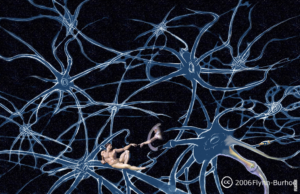The Silent Architects of Life: Skeletons Unveiled
Skeletons are nature’s masterpieces, intricately designed to support, protect, and enable the remarkable diversity of life on Earth. These bony frameworks play a pivotal role in an array of fascinating functions, shaping the world as we know it.
Structural Stability and Locomotion
One of the primary roles of skeletons is to provide structural stability and support for organisms. From the immense blue whale to the tiniest insect, skeletons serve as the architectural marvels that enable movement. Whether soaring through the skies or scurrying across the ground, skeletons lend the necessary framework for locomotion, permitting animals to navigate their environments with grace and agility.
Guardians of Vital Organs
Deep within the human body, the skeleton silently safeguards vital organs, shielding them from potential harm. The sturdy ribcage, for example, encompasses the delicate heart and lungs, acting as a fortress of protection. Likewise, the skull’s intricate design envelops and shields the brain, nature’s most remarkable creation, ensuring its safety despite life’s chaotic twists and turns.
Mineral Reservoirs
Skeletons also act as mineral reservoirs, storing essential elements like calcium and phosphorus. These minerals not only provide strength and rigidity to the bones themselves but also serve as vital resources for other bodily functions. When the body requires additional calcium, for instance, the skeleton willingly releases it, maintaining the delicate balance necessary for overall well-being.
Evolutionary Time Capsules
Within the intricate structure of skeletons lies an awe-inspiring story of evolution. Fossils, preserved remains of ancient organisms, offer invaluable insights into the history of life on Earth. Skeletons serve as timeless time capsules, allowing scientists to unravel the mysteries of past species, reconstruct how they lived, and understand the intricate web of life that has shaped our planet over millions of years.
Post
Post
The Art of Camouflage
In the animal kingdom, skeletons play a crucial role in the art of camouflage. From the chameleon’s ability to blend seamlessly into its surroundings to the leafy seadragon’s intricate mimicry of underwater foliage, skeletons form the foundation for these remarkable adaptations. The arrangement, shape, and even transparency of bones contribute to an organism’s ability to conceal itself from predators or sneak up on unsuspecting prey.
Endless Possibilities: Skeletons as Inspiration
Human ingenuity has often found inspiration in the elegant design of skeletons. Architects, engineers, and designers have drawn upon nature’s blueprints to create awe-inspiring structures, efficient machines, and innovative technologies. From the remarkable strength-to-weight ratio observed in bird skeletons to the flexible joints of the human hand, skeletons continue to inspire groundbreaking advancements that shape our modern world.
The Silent Architects
Although often overlooked, skeletons are the silent architects that underpin life’s astonishing diversity. From providing stability and protection to enabling locomotion and storing essential minerals, these intricate frameworks have shaped the course of evolution and continue to shape our understanding of the natural world. So, let us marvel at the wonders of skeletons, for they are the unsung heroes of life itself.



